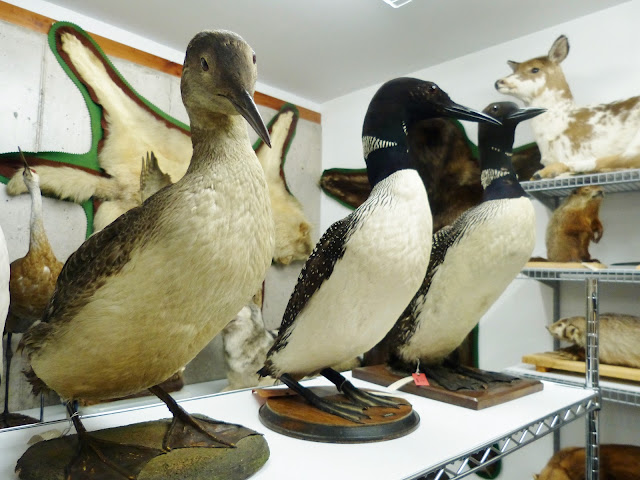Loony Legs
After a sunny and windswept morning on Lake Namakagon, the humbly ancient loon swam through my thoughts for the rest of the day. They do a good job of providing endless fascination for us locals, while simultaneously proving to be readily available to any of us attempting to catch a glimpse. I watch them quite often, despite having moved off the lake and into the woods a few years back. But to be honest, I still have the distinct opportunity to view loons on any given day - in the Museum's collection. Except our specimens look a bit odd compared to their living counterparts.
Notice that the three common loons are shown standing upright, with their chest high above their tail end. This isn't a stance that I would observe in nature. Common loons don't stand like that because they really don't stand at all.
Loons are built to dive for food, with strong legs that are positioned far back on their bodies. They spend nearly all their living moments in water, some time in the sky during migration, on a nest, and for a very short period of time on Mom's back. Yet they rarely go on land. Because their legs are so far back on their heavy bodies, loons have a lot of trouble struggling to walk if they do venture onto solid ground. They lumber around as best as they can, but do so with chest dragging along the ground, as if a baby attempting an armless army crawl. This is certainly not a graceful image.
So while a taxidermy mount can provide some valuable insight into the biology of an animal, I dare say that I favor a live loon encounter any day.
 |
| These two juvenile loons may still be sticking to their family unit, but at this point are rather self-sufficient in the water. |
